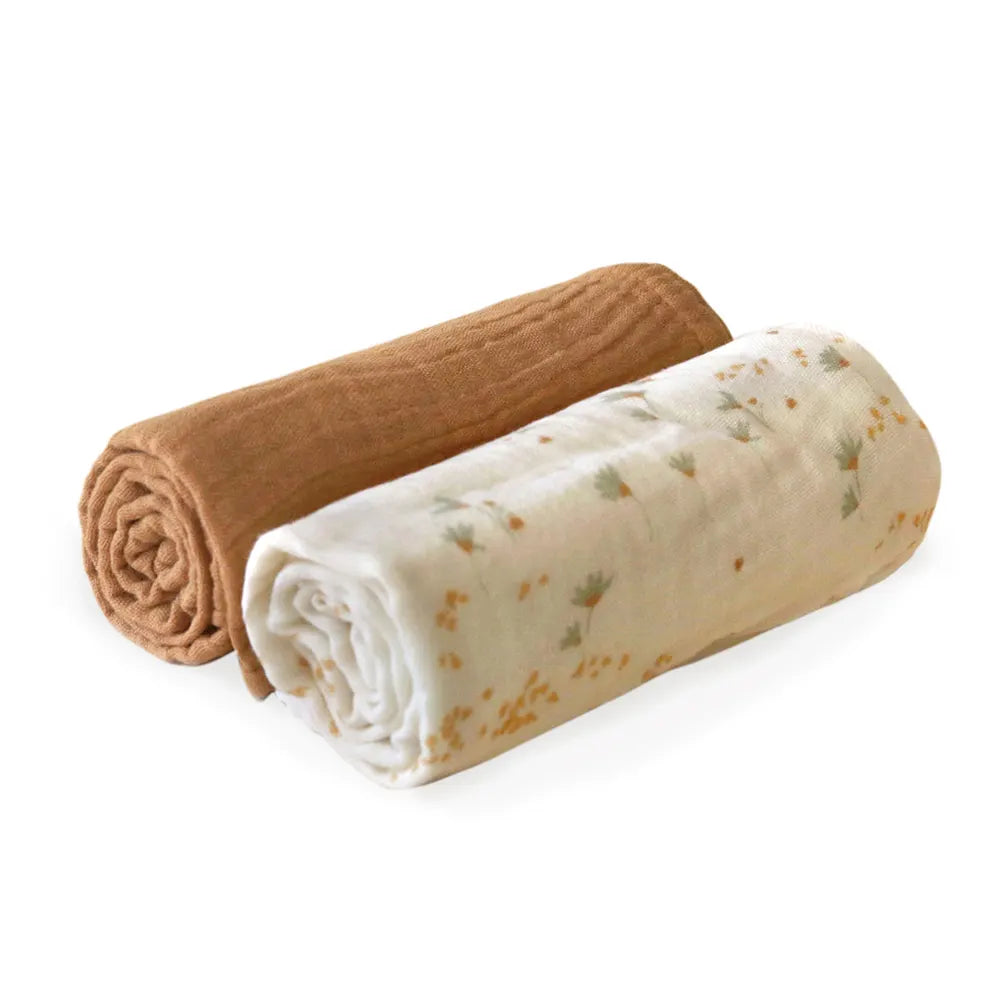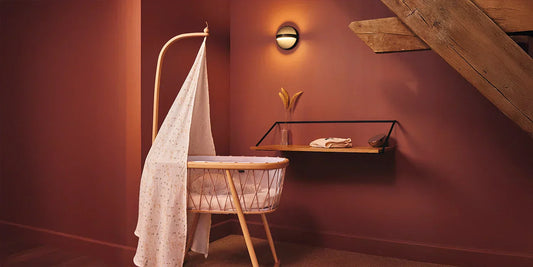A short guide to introducing pieces into baby food diversification

The stages of diversification
First of all, let's start with a reminder! The stages of feeding a baby are as follows:
- 0 to 4 months: breast milk or milk powder
- 4 to 6 months: the discovery of smooth textures with simple pureed meals, in addition to milk
- 6 to 9 months: the introduction of flavors with small spices, aromatic herbs, in addition to milk
- 9 to 12 months: the introduction of wholegrain pieces and meals, in addition to milk

If you want to know more, reread our interview with Clémence Maumené, the founder of Cook for Baby.
When can baby eat pieces?
Introducing pieces into a baby's diet is the second step until complete meals. There is no exact science to tell you when your baby will be ready to eat pieces! Some health professionals say that babies can start an introduction to songs around 6 months, others talk about 8 months, while the latter talk about 10 months.
Each child is different and you will need to keep up with them. Yours may need to start introducing pieces of food around 7 or 8 months of age. If in doubt, discuss this with your pediatrician or doctor.
Our advice: an introduction should be done calmly, in a fun way and when the child is physically ready. Baby will chew and crush food with their jaws, palate, and tongue. It's also essential to look for other signs that your baby is ready, such as the ability to hold his head up and sit up with support. In order to be able to eat solid foods, your baby will need to be able to sit on a high chair like the TOBO.
How do you introduce pieces into a baby's diet?
The introduction of the pieces is gradual. At first, baby gobbles up tons of milk, then comes the purée and finally the pieces!
In order to get to the pieces, you will first have to make increasingly granular purees, then mash the food with a fork to make larger pieces, then leave the food untouched. It is a way to make swallowing easier as you go.
For pieces, start with foods that are soft and easy to chew:
- Vegetables (asparagus, cooked carrots, broccoli...)
- Fruits (bananas, strawberries, avocados, cooked apples...)
- Meat (meat that is smooth and not very nervous)

Go little by little. If your baby is not ready, if he does not eat what you offer him, that's okay. Don't force him to try. The goal is for him to understand how it works and so that he can have fun playing with the textures, flavors, and touch of food.
When baby doesn't like certain foods, it's normal and you can try again other times. Eating should not become a frustration or a painful moment for him... as for you, young parents!

Baby food diversification equipment
Baby tableware
Remember to use a soft silicone spoon so baby doesn't hurt their teeth or gums.
A good bib and... a good dose of letting go
A good bib is always necessary so that he doesn't get his nice clothes dirty. However, let him explore the foods as he sees fit. Again, eating should be a pleasure. At their age, touch plays a key role. When introducing new foods and new stages in the diet, the aim is for baby to be able to tame the foods he is going to eat in order to enjoy them in the best possible way.
A high chair worthy of your mini-devourer
A comfortable and secure high chair for your baby's meals is a must! The TOBO high chair is specially designed to have a good time and accompany your child for a long time. Its adjustable height allows it to be adapted to the growth of your child, thus ensuring long-term use.
Its ergonomic design thanks to the baby set ensures good posture maintenance, promoting a comfortable and safe diet. Its tablet and its cozy cushion are perfect for a gentle start. Made of beech wood and with an elegant design, the TOBO is not only functional, but also aesthetic. Thanks to its color, material and style, it fits everywhere.
Lots and lots of patience
As we told you above, baby will make a mess everywhere by testing new things. This exploration, like so many others, is likely to be invasive and dirty. Plan times when the family is in good shape. The weekend during lunch is ideal for doing this dietary introduction. You still have the rest of the day to... clean up, rest, and enjoy your baby.
And the DME in all this?
Child-Led Diversification or DME is the act of offering a panel of pieces of fruit or vegetables that the child will choose to eat or not. DME is often considered to be complementary to traditional diversification. According to some health professionals, it is important for baby to receive the necessary nutrients (protein, good fats, etc.) to avoid any form of deficiency. The most effective way would be purees!
Parents' FAQ
Does a baby have to have teeth to eat pieces?
Not necessarily! Baby gums, palate, and tongue are small, powerful machines that are ready to be crushed. Start with tender foods and cut them into baby size pieces. Before you know it, your toothless little gourmet will be a pro when it comes to pieces!
I am afraid of wrong roads and that baby will choke. Any advice?
Follow a few simple rules. Adopt a good position so baby doesn't choke; head and back straight. Arm yourself with a good high chair. Start with foods that are soft and cut into small pieces to minimize risks. Be careful, do not cut food in circles. Carrot slices and uncut grape seeds, for example, are banned. Keep a close eye on baby during meals and encourage them to chew gently. And remember, it's normal to make a bit of a mess on this culinary adventure.
What should I do if my baby doesn't like what I'm giving?
Don't worry if baby pouts at the first bite. Dietary diversification is like a global food tour for babies. Try again and again. Get creative with textures and flavors. And if all else fails, maybe baby is just in “I'm not ready for this” mode today. No worries, try it later.
By gradually introducing pieces into your baby's diet and using an adapted high chair, you contribute to their good nutritional development and independence. Give them a rewarding dining experience while ensuring their safety and comfort. And don't forget, eating is one of the greatest pleasures from ages 0 to 90.
The Charlie Crane Team
You might also like:









